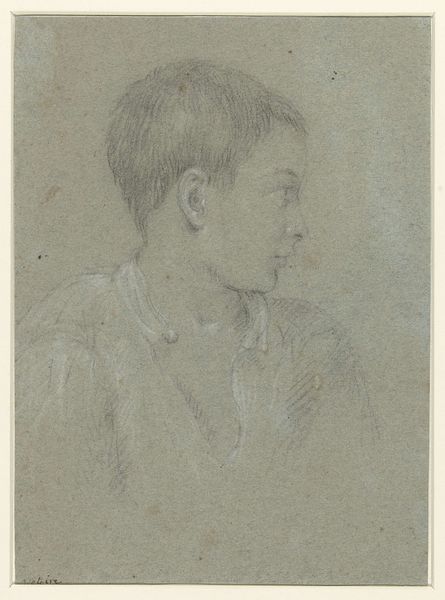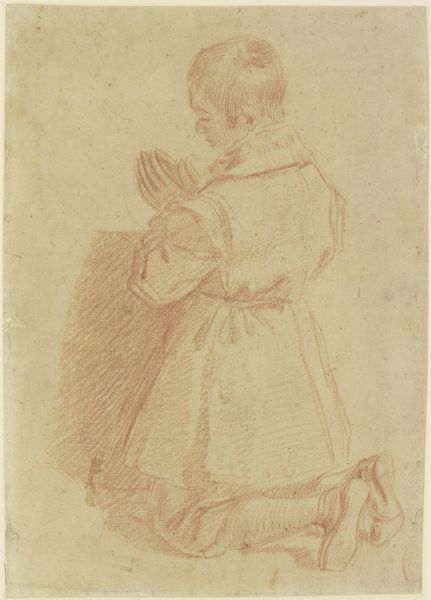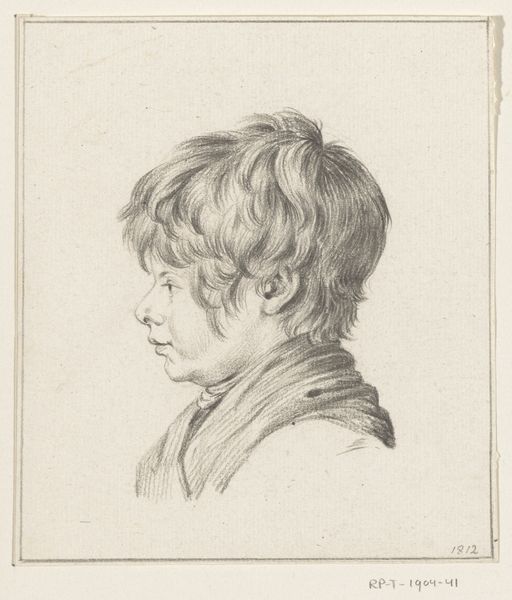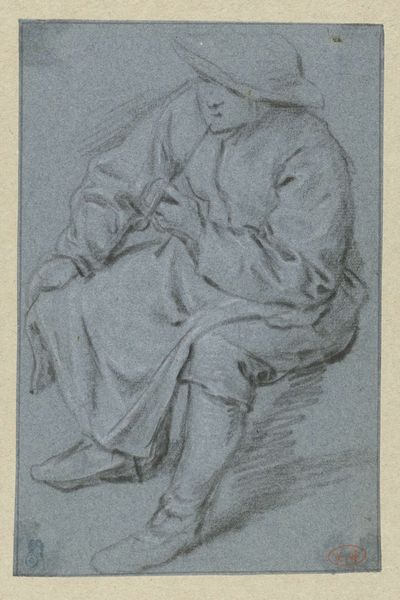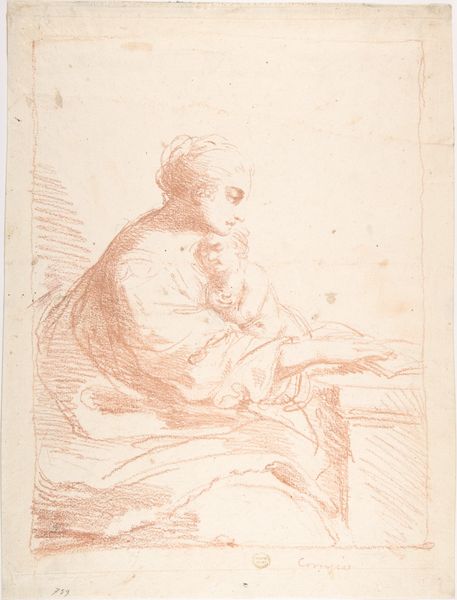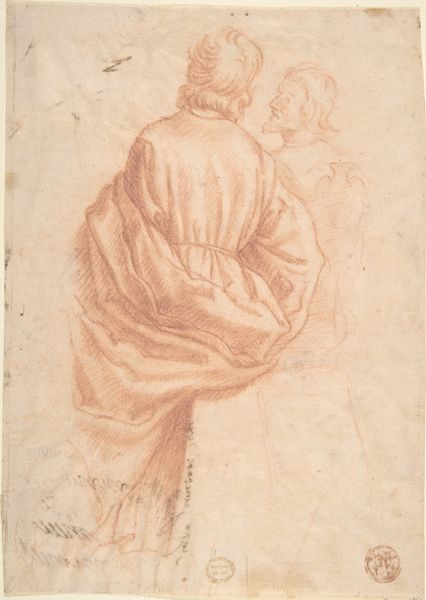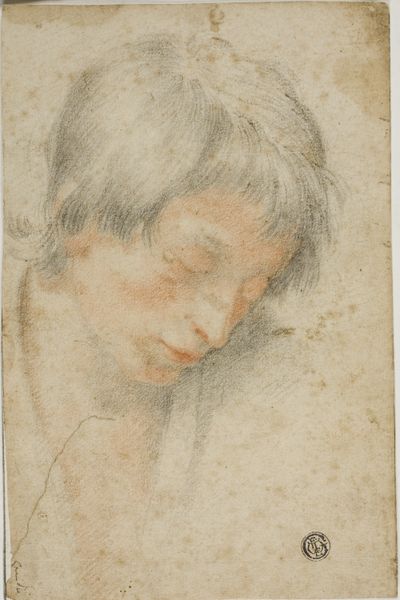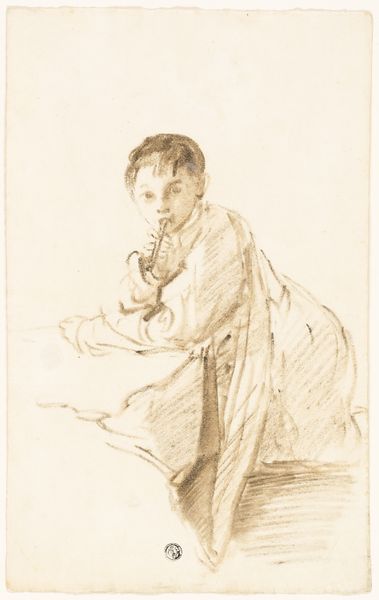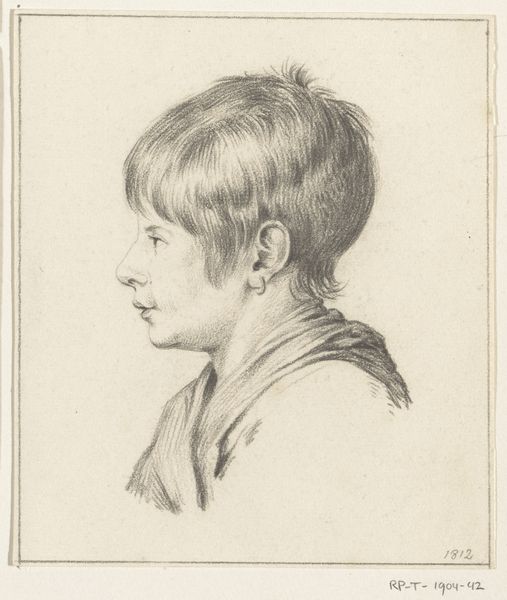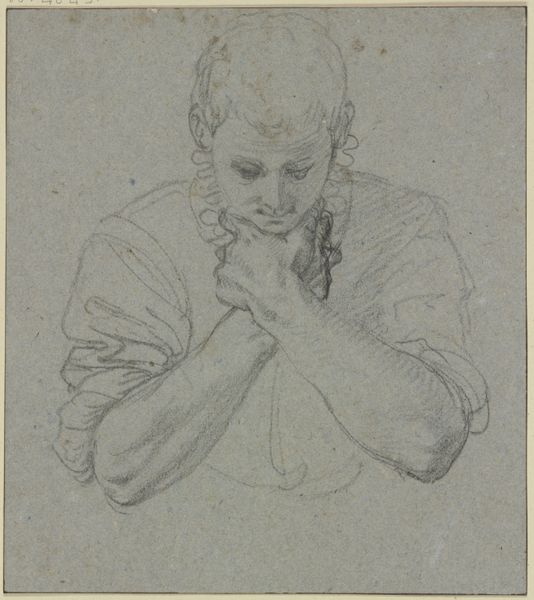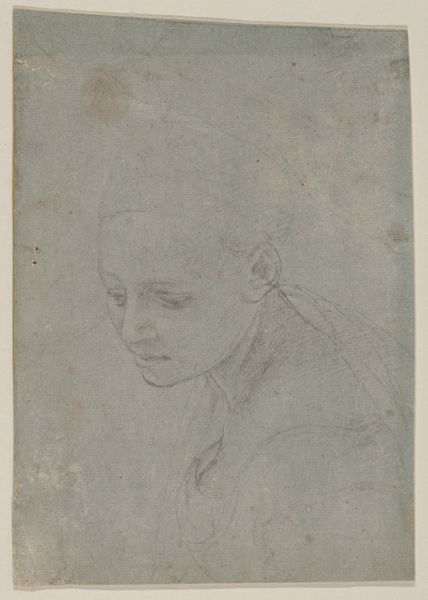
drawing, print, paper, pencil, chalk, graphite, black-chalk
#
portrait
#
drawing
# print
#
pencil sketch
#
charcoal drawing
#
paper
#
pencil drawing
#
pencil
#
chalk
#
graphite
#
portrait drawing
#
black-chalk
#
watercolor
Dimensions: 214 × 166 mm
Copyright: Public Domain
Isaac Oliver made this drawing of a man's head and shoulders in England, sometime in the late 16th or early 17th century. The blue chalk is typical of Oliver's style, and the pose may have been for a portrait miniature. But let's consider what it meant to create images like this at this time. During the Elizabethan era, the English aristocracy were obsessed with self-fashioning. Portraits helped to promote carefully crafted images of status and personal identity. Yet, this drawing subverts those norms. The man's averted gaze frustrates our desire to know who he is, to read his social standing. What was Oliver trying to say? Was he critiquing the vanity of the court, or simply exploring a different mode of representation? To answer these questions, we can look at letters, diaries and other period documents. Art doesn't exist in a vacuum. Its meaning is always shaped by the society in which it was created.
Comments
No comments
Be the first to comment and join the conversation on the ultimate creative platform.
